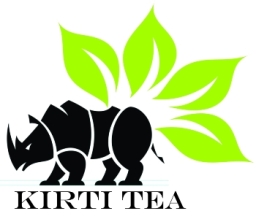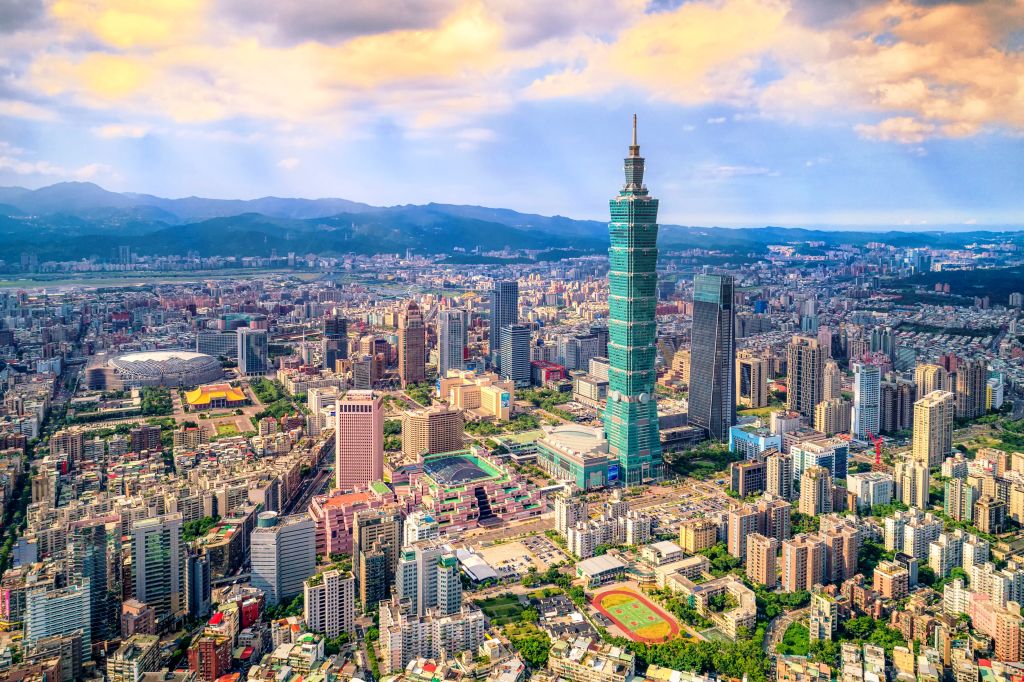Assam Tea, CTC Tea, Darjeeling Tea, Green Tea, News & Update, Orthodox Tea, Tea, Tea Business
A Flavour Of The Best Of Assam Tea In Taiwan
On the occasion of International Tea Day, we dig out an inconspicuous entity of the popular Indian tea variety in the controversial geopolitical entity.
“Each cup of tea represents an imaginary voyage.” Even though Cathartine Douzel’s imagination over tea is somewhat appropriate, the most popular beverage in the world did make many actual voyages to reach a connoisseur’s table. If the Chinese originally discovered the shrubs of Camellia sinesis and clandestinely cultivated, curated and cultured for centuries, the British East India company officials not only got mesmerised by the ambrosiac beverage’s aroma and flavour but also surreptitiously got hold of the plants and the modus operandi of the brewing process through a series of intrepid expeditions and a slew of secret missions across China’s vast and mountainous regions in the early 19th century.
Soon the Company and its associates from England kickstarted the great tea rush in the North-East Indian state of Assam. Although the plants, brought in from China through bribes and literally bit the dust in a different topography and climatic conditions from their original habitat in the high altitude regions in their parent country, a new variety was officially uncovered in 1834. Assam tea became the second major and the first non-Chinese variety of tea, securing the scientific name of Camellia sinesis var. assamica, while the Chinese ones were called Camellia sinesis var. sinesis henceforth.
As the sinesis variety, meaning “from China”, continued to dominate the burgeoning tea market in the west, the Company’s aggressive trading of its assamica variety, named after its place of origin in Assam, got a huge impetus with the former type mostly remaining out of reach of the British traders. The assamica variety, or, popularly, the Assam tea, started spreading its branches in different countries, including the then Java (Indonesia) and Kenya, Tanzania, among a few other countries in the 19th century the early 20th century as well.
Journey of tea leaves
But quite surprisingly, the best variety of Assam tea, believe it or not, found its way into central Taiwan. Sun Moon Lake in central Taiwan’s Nantou country is the largest body of water on the entire island and was the most favourite scenic spot of its former leader Chiang Kai-shek, the Chinese military leader, who had retreated to Taiwan after being drubbed by the Mao Ze Dong-lead Communists in Mainland China in 1949.
But more than two decades before the Generalissimo’s arrival in the East Asian island, the Japanese, who ruled Taiwan after defeating the Chinese Qing dynasty in the First Sino-Japanese War in 1895 and until their surrender at the end of World War II in 1945, found their love for tea in the Assamese variety as well.
Historically, the transportation of some tea trees from Mainland China’s Fujian province, known for being the producers of top-quality of Camellia sinesis var. sinesis began the tea culture in Taiwan more than 200 years ago.
Also, two wild, indigenous tea subspecies, Taiwan Mountain Tea and Red Sprout Mountain Tea, were discovered on the island as early as the 17th century, but those had little economic value and were not widely used due to their bitter taste and thin, brittle leaves. During their occupation of Taiwan, the Japanese paid special attention and put a lot of efforts to bring their ceremonial and traditional tea culture to the island.
They not only expanded Taiwanese tea farms and encouraged the cultivation of local varieties, including the four main varieties: Qingxin Oolong (green-hearted oolong), Qingxin Damo, Daye Oolong (big-leaf oolong), Ying Zhi Hongxin (hard-stemmed red-hearted), but also set up a tea research institute to advance the cultivation and production of black tea. But the icing on the cake for the island’s tea industry was when the high-quality and premium-valued tea shrubs from Assam were eventually introduced by the Japanese around the Sun Moon Lake in 1926 as an experiment and the rest, as they say, history, even though it remained a bit inconspicuous due to the island’s controversial geopolitical existence.
The fertile soil and humid environment in this mountain lake region did wonders for the imported Assamese shrubs. Moreover, the subtropical climate of Taiwan and the mountainous terrain provided ideal conditions for the growth of the Assam tea as high mountains, the cool, moist air slowed its growth, and this in combination with fertile soil gave the unique properties of tea leaf, making it one of the best in the world.
Taiwan’s own well-established traditions of tea processing, adapted to local conditions, too acted as a catalyst.
Treasure-trove of tea
Even Starbucks outlets in Taiwan sell Assam tea souvenirs, cakes and rolls. Photo: Suvam Pal
Well, like many of the Indians, including some of my tea-taster friends, I wasn’t aware of that Assam connection earlier. When I visited the island and its centrepiece of sightseeing attractions, Sun Moon Lake, named so as its east side resembles a sun while the west side resembles a moon, I was stunned to see several “Assam tea” gardens and plantations around the area. The shops, stalls, kiosks, and, ironically, Starbucks outlets were selling “Assam tea” souvenirs while some of the must-try delicacies of the area included Assam tea cheesecake and Assam tea egg rolls. Yes, the name of the north-eastern Indian state as a bespoke brand in Taiwan caught my attention and paved the way for this research of a lesser-known voyage of tea to the tiny island region.
Even though I read about its pedigree, the Assam tea in Taiwan was found to have a richer flavour than its Indian counterpart. Some experts informed me the Sun Moon Lake variety of assamica is picked once a year during June-July the heavy, moist and stable yearly average temperature make the tea trees grow thick and rich tea leaves, producing carmine and perfectly clear tea.
Apparently, the Taiwanese Assam tea is strong-oxidized and hard roasted, and its leaves are golden brown, wide, stretched and slightly twisted. This tea is bright red, clear and lustrous, while its ancestors from Assam turns dark when brewing. Another reason that has made the Taiwanese assamica better quality than their Indian counterparts is its rich and refined sweet taste and absence of bitterness.
One can directly feel the refreshing aroma of black tea with its very delicate taste. But due to its high internal consumption, as the experts explained to me, the high-quality Assam Tea from Taiwan don’t quite travel outside the island. Notably, it’s also sticking its neck out of the strong competition from the region’s latest tea fad, bubble tea.
Known for having its attractive black tapioca “pearls”, made from the root of cassava mixed with brown sugar or caramel, and various sweet flavourings to cold, infused tea, the popularity of bubble tea have been quite enormous in Taiwan, Hong Kong, Mainland and even other places in Southeast Asia. But between Chinese tea and bubble tea, the tea variety from Assam has carved a niche in a faraway land.
More fascinatingly, it’s a unique voyage that saw an Indian variety of tea landing up on the soil of a breakaway province of the discoverer of the plant, China, who had many centuries ago introduced their enlivening elixir to their neighbouring nation of Japan, who had eventually imported the indigenous shrubs from Assam to Taiwan.
While celebrating International Tea Day on Friday, interestingly, another popular and premium variety of tea from India, the Darjeeling tea with a registered geographical indication (GI) tag and its distinctive muscatel aroma, is actually a Chinese variety of Camellia sinesis var. sinesis as the shrubs for the early plantations were smuggled out of China by the British botanists and the Company officials in the mid-19th century. Nonetheless, the historic voyage of the beverage can literally create a storm in a teacup for many countries.
P.S – Notably, as I was roaming around the sylvan surroundings of the Sun Moon Lake, laced with the tea shrubs from my homeland, I stumbled upon the relics of a great explorer from China, the original land of tea. There is a Xuanzang Temple (or Syuentzang Temple), located adjacent to the lake, where the skull bones of Xuanzang, the iconic Buddhist scholar from China, who had made a civilizations-connecting 17-year overland voyage to India, is kept. The more interesting part is like the sojourner himself, Xuanzang’s skull travelled from his resting place of Changan (present-day Xi’an) to Nanjing to Ji-on Temple in Japan’s Saitama Prefecture before being enshrined in the eponymous temple in the breeding ground of Assam tea in Taiwan.
(The author is an international media professional, author and documentary filmmaker. Views are personal) Credit-Outlook

